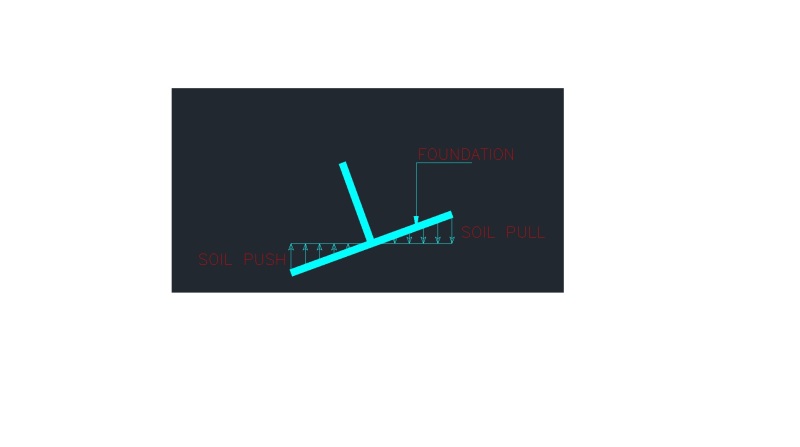StructuralAddict
Civil/Environmental
- Jul 19, 2016
- 106
Hello everyone,
When idealising the supports of a building, we have three options:
1- Fixed Supports.
2- Pinned Supports.
3- Spring Supports with a defined rotational stiffness.
The attached file shows part of "Paulay and Priestley (1992)" book titled (Seismic Design of Reinforced Concrete and Masonry Buildings) discussing what is the most appropriate way to model foundations.
In summary, the footings can be best modelled by determining the flexural stiffness (Kf) of an equivalent spring. This can be calculated as:
(Kf) = (ks)x(If)
where:
(ks) is the subgrade modulus (MPa/m) and can be obtained easily from the soil report.
(If) is the (moment of inertia of the footing) divided by (soil interface corresponding with footing rotation).
Unfortunately, I am not sure of how to calculate the (If) factor in the above equation. I appreciate if anyone can provide me with a sample calculation for an arbitrary footing.
Thanks in advance!
When idealising the supports of a building, we have three options:
1- Fixed Supports.
2- Pinned Supports.
3- Spring Supports with a defined rotational stiffness.
The attached file shows part of "Paulay and Priestley (1992)" book titled (Seismic Design of Reinforced Concrete and Masonry Buildings) discussing what is the most appropriate way to model foundations.
In summary, the footings can be best modelled by determining the flexural stiffness (Kf) of an equivalent spring. This can be calculated as:
(Kf) = (ks)x(If)
where:
(ks) is the subgrade modulus (MPa/m) and can be obtained easily from the soil report.
(If) is the (moment of inertia of the footing) divided by (soil interface corresponding with footing rotation).
Unfortunately, I am not sure of how to calculate the (If) factor in the above equation. I appreciate if anyone can provide me with a sample calculation for an arbitrary footing.
Thanks in advance!

